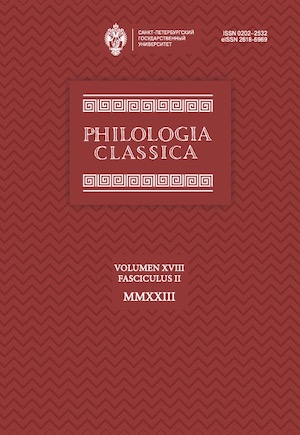Initiatur in spelaeo: A Review of Ancient Terminology for Mithraic Cultic Spaces
DOI:
https://doi.org/10.21638/spbu20.2023.208Аннотация
Наиболее распространенным словом, принятым в митраистской историографии для обозначения мест поклонения, является Mithraeum. Однако исторические источники предлагают нам множество терминов, расходящихся с этим определением, которые могут отражать различные реалии и обозначать культовые помещения другого типа. В данной работе мы собрали все упоминания, встречающиеся в эпиграфике и литературных источниках, чтобы иметь полное представление обо всех этих терминах. Благодаря данным свидетельствам мы пересмотрели прежние интерпретации, связанные с использованием различных наименований. Их разнообразие не обусловлено ни местом, ни периодом. Но мы предполагаем, что это терминологическое разнообразие связано с тем, как последователи древнего Митры относились к моменту создания культового пространства. С выбором слова spelaeum или templum можно связать первое представление о том, что должно быть “первоначальной митраистской пещерой”, если учесть значение глаголов, которые использовали посвятители в своих надписях. Справедливость такой интерпретации позволит лучше понять ту “символическую вселенную”, в которой действовали последователи Митры, противопоставив ей общепринятый современный термин mithraeum.
Ключевые слова:
митраизм, пещера, восточные культы, эпиграфика, митраистский храм
Скачивания
Библиографические ссылки
Загрузки
Опубликован
Как цитировать
Выпуск
Раздел
Лицензия
Статьи журнала «Philologia Classica» находятся в открытом доступе и распространяются в соответствии с условиями Лицензионного Договора с Санкт-Петербургским государственным университетом, который бесплатно предоставляет авторам неограниченное распространение и самостоятельное архивирование.






